Xiaomi 11T Pro
Two-minute review
While the main numbered range of Xiaomi phones is where the company debuts its flashy new tech and features, the T line is often where the real action is.
Launching roughly six months after the Xiaomi Mi 11, the 11T Pro offers lots of the features of that premium phone in a device that’s more modestly priced, though with a few corners cut here and there to keep that price low.
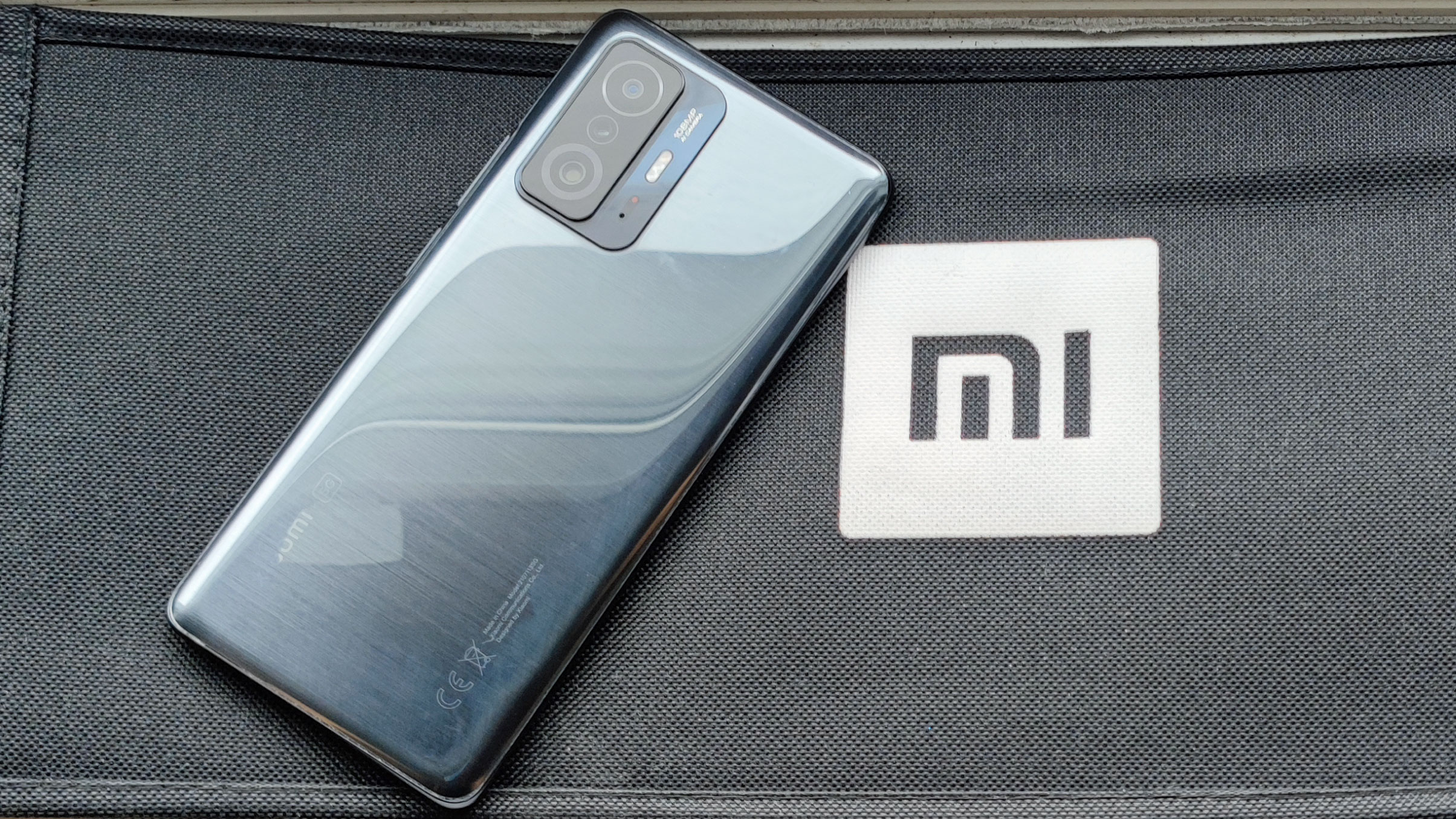
Release date and price
Design
Display
Camera
Specs and performance
Software
Battery life
Should I buy it?
That’s the whole point of the Mi T family, but while the Mi 10T Pro was an intriguing counterpoint to the Mi 10 and Mi 10 Pro, the 11T Pro is an impressive device that will easily tempt buyers away from the ‘standard’ Mi 11.
The Xiaomi 11T Pro – note the lack of the ‘Mi’, as Xiaomi has stopped using the duplicate Mi branding that we used to see in handsets from the company – is a flagship phone in the areas where it counts.
It has almost exactly the same camera array, the same chipset, a bigger battery and faster charging than the Mi 11. Sure, its screen is a tiny bit smaller, but due to the display having flat edges (not curved, as in the Mi 11) the viewable area is basically the same size.
That fast charging we mentioned is definitely the biggest new feature, as it’s a startling 120W using the in-box charger. That’s over twice as fast as the 55W charging of the Mi 11, and zooms past the Samsung Galaxy S21’s 25W or the iPhone 12’s 15W. It takes just over 15 minutes – that’s not a typo: fifteen – to power the phone to full at that speed.
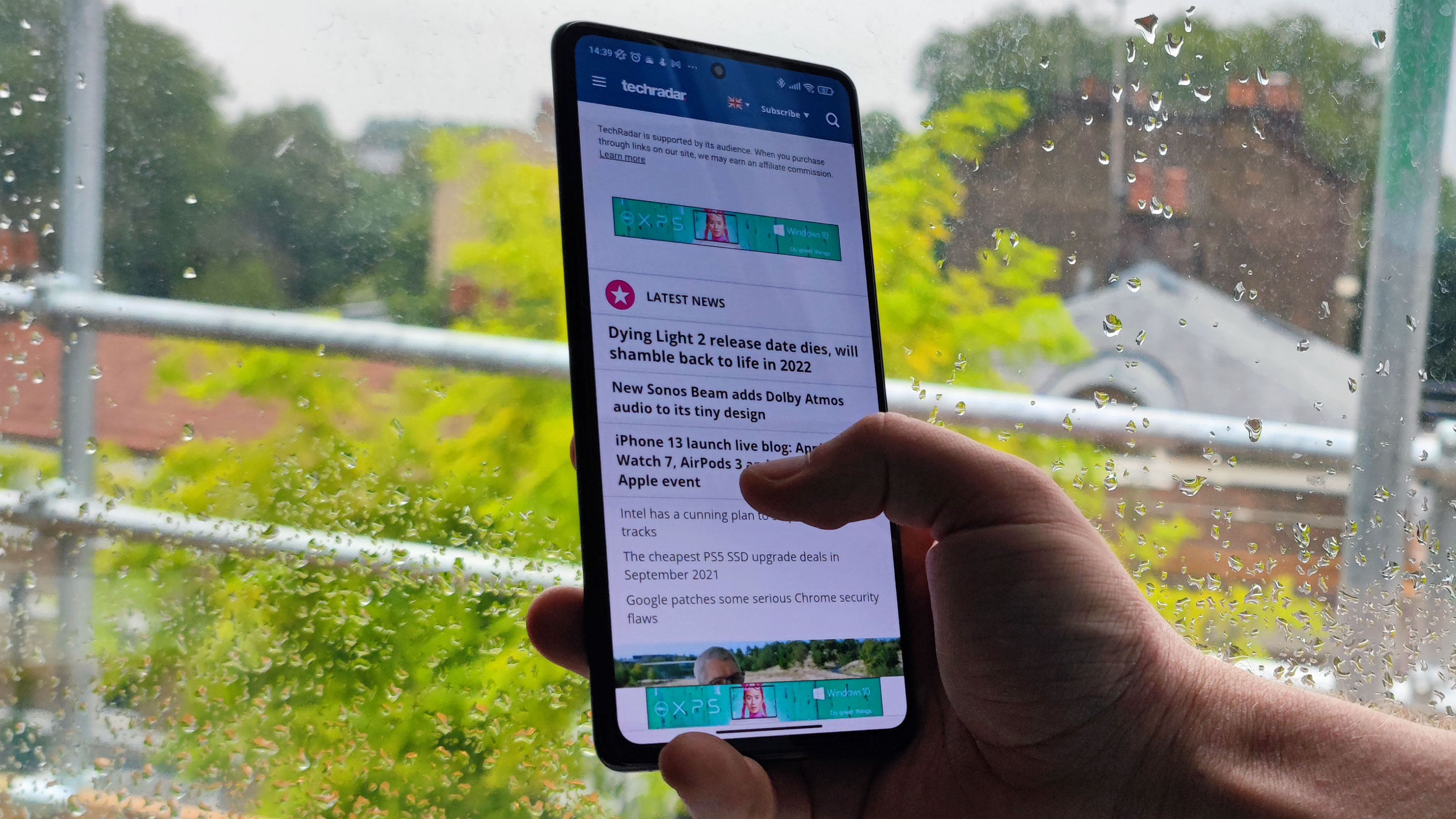
Many other features here were expected in the Mi 11, but are impressive here due to the lower price. The Snapdragon 888 chipset, for example, is most commonly found in premium phones, though some cheaper handsets have it too, and it provides oodles of processing power for gaming or other tasks.
Well, in theory it does… but the 888’s oft-reported overheating issue rears its head here. The chipset has been known to overheat when pushed, which can in turn reduce its performance until it cools down, so if you use the phone heavily you might run into this issue.
That’s not the only minor annoyance the Xiaomi 11T Pro presents – another is that the material used for its rear easily picks up fingerprints. Within a few minutes of starting to use the device, our review unit looked as much like an impressionist painting as a smartphone.
Oh, and people with smaller hands might struggle to reach the side buttons on the phone, as it’s a pretty chunky device.
Overall, though, we were impressed with the Xiaomi 11T Pro during our testing. It’s just a shame it won’t be the stand-out member of the Mi 11T line, as the non-Pro version is cheaper with relatively few downgrades.
Xiaomi 11T Pro price and availability
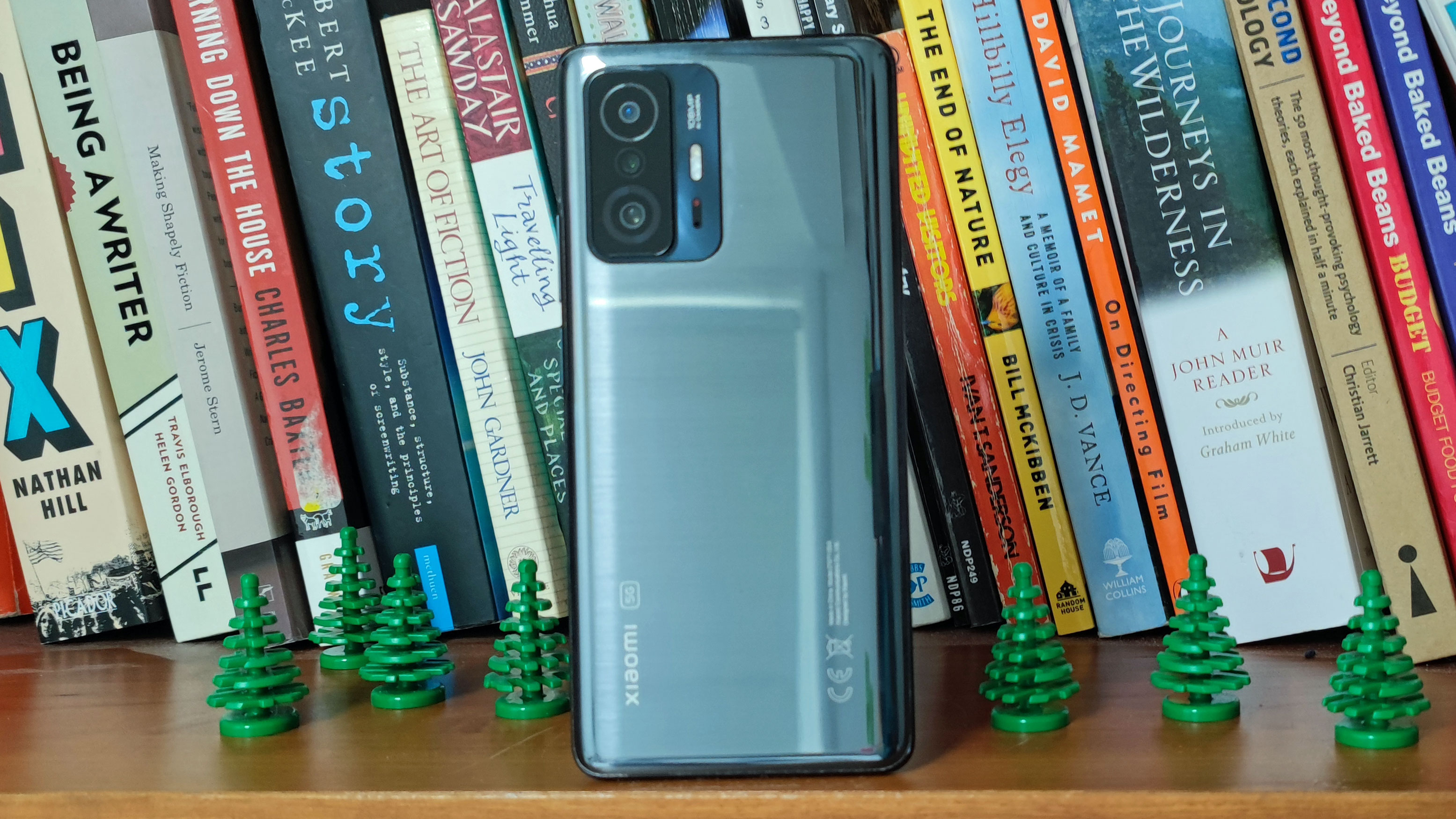
The Xiaomi 11T Pro release date is October 1, with pre-orders beginning the week before. That’s slightly earlier than the non-Pro’s release date on October 7.
The price is £599 (roughly $830, AU$1,130) - that’s for 8GB RAM and 128GB storage, and that goes up to £699 (about $970, AU$1,320) for double the storage. Right now we only have UK prices, but it’s likely the phone will also go on sale in Australia.
For context the Xiaomi Mi 11 cost £749 / AU$1,099 (roughly $1,040) for the former storage size and £799 / AU$1,139 (around $1,110) for the latter making this a more affordable device, at least in regions we have prices for.
The real competition here is the Xiaomi 11T, as its main downgrades from the standard phone are slower charging and a slightly weaker chipset. However starting at just £499 (about $690, AU$940) the lower price more than makes up for the reduced specs.
Design
The Xiaomi 11T Pro isn’t the most visually distinct smartphone in the world, but that’s the company’s T line for you.
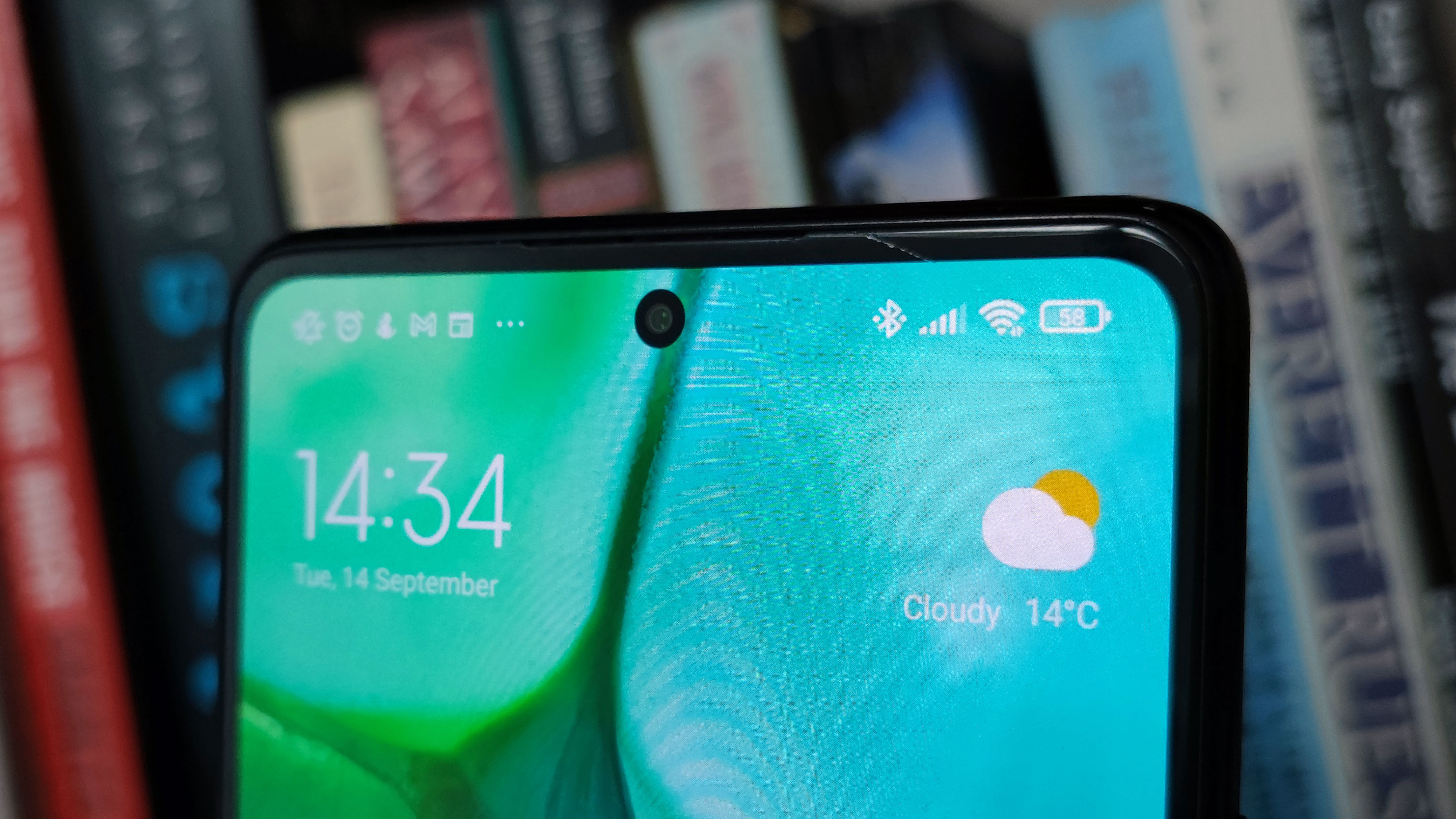
It’s a big phone – maybe too big for some people to comfortably use, as it was a stretch for us and we’ve got fairly average-sized mitts – but that’s because you’ve got so much screen space.
On the right edge of the phone is a fingerprint scanner, which was just within reach for us but might be a struggle for some to hit. It’s an impressively responsive scanner, and we never had trouble unlocking our phone just with a tap of our thumb.
In fact, we sometimes found the sensor a little too sensitive – when we were holding the device in our hand while walking or on a run, even a slight brush of our thumb over the scanner would unlock the phone, meaning that we often unlocked the device when we didn’t want to. We can’t really mark a phone down for having a feature that’s too good, but it’s something worth noting.
Just above the fingerprint scanner is the volume rocker. The handset has a USB-C port but no 3.5mm headphone jack, so fans of wired audio will need an adaptor if they want to plug their cans in.
A nice improvement over the Mi 10T Pro here is the camera bump on the back, which stuck out like a mountain range on the 2020 phone, but on the 11T Pro is much less imposing. The rear of the phone isn’t without its issues though, as it’s a fingerprint magnet – holding and using the device for any length of time will turn the smooth plastic, which comes in a choice of white, blue, or gray, into a patchwork of smudges and marks.
Display
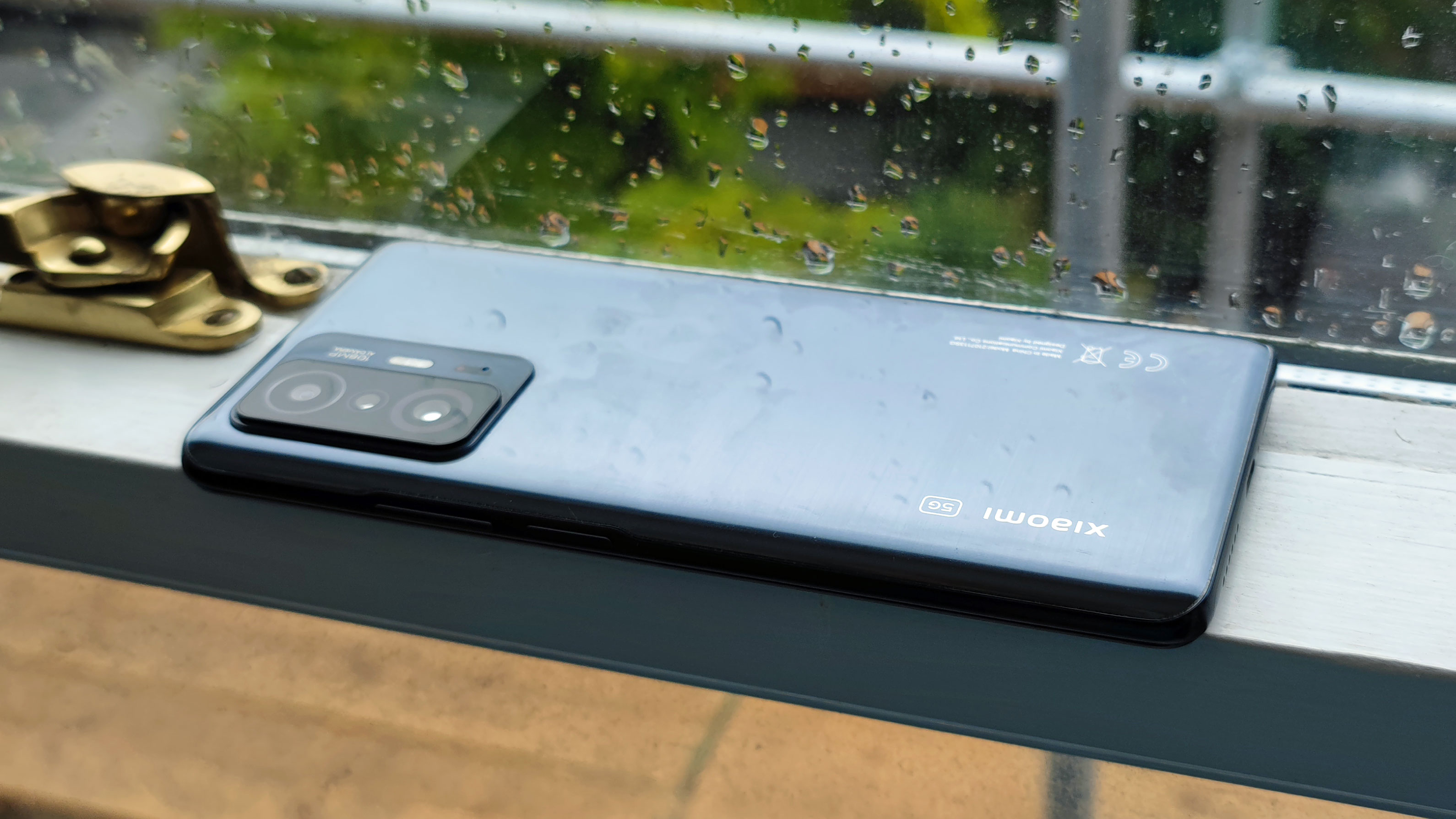
On paper, the Xiaomi 11T Pro’s screen is arguably one of its biggest downgrades from the Mi 11; that’s not to say it’s bad, but the Mi 11’s display was one of its key selling points, whereas it seems that Xiaomi is focusing on cameras for the 11T Pro. The screen here is absolutely fit for purpose, though.
It’s a 6.67-inch AMOLED panel, which is a little smaller than the 6.81-inch display on the Mi 11, but unlike on that phone the 11T Pro’s screen doesn’t curve at the edges, and the punch-hole for the front-facing camera is at the top-center of the screen, rather than the top-left.
The resolution is 2400 x 1080, which is the standard for most phones at any price, though the Mi 11 phones hit 3200 x 1440. 1080p is fine for most tasks though, as your streaming services and games will generally only reach that resolution, and we never found ourselves wishing for more pixels.
The handset also has a fast 120Hz refresh rate, which matches the Mi 11 but actually falls short of the 144Hz on the Mi 10T series – although that’s an easy downgrade to overlook when you consider that so few apps can make the most of 144Hz screens. That’s the theme of the Mi 11T Pro’s display – downgrades you can live with.
Cameras
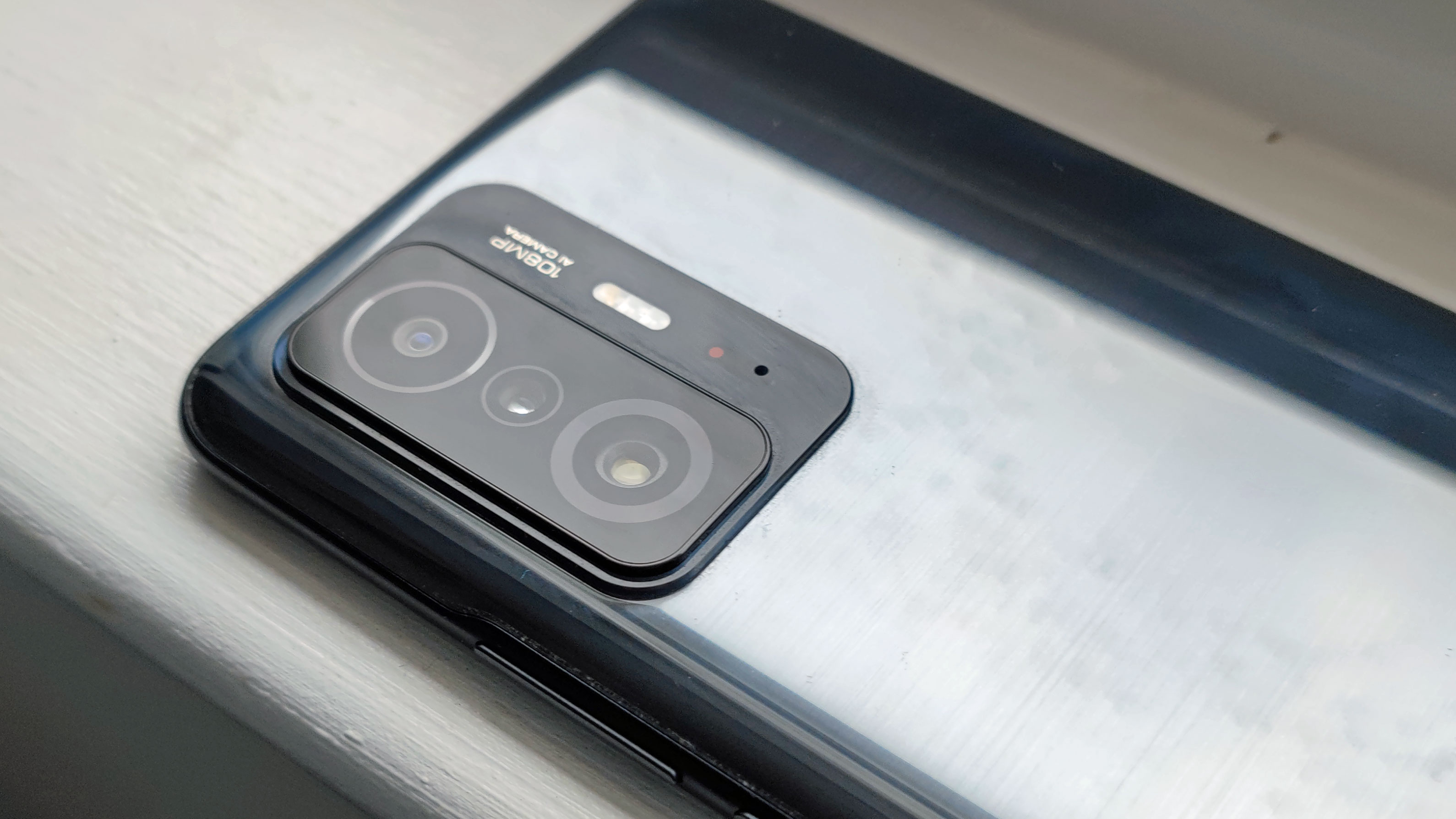
If you know the Xiaomi Mi 11’s cameras, you’ll find the 11T Pro’s array fairly familiar: it has the same 108MP main and 5MP telemacro snappers, but its ultra-wide and selfie cameras are lower-res at 8MP and 16MP respectively.
We found the f/1.75 108MP main camera performed similarly to the one on the Mi 11 – it takes great-looking shots in well-lit conditions, with good contrast, bold colors and lots of detail. By default this camera uses ‘pixel binning’, a process by which the pixels, or photosites, on the sensor are combined to create fewer, but larger, pixels (which are better for ‘seeing’ light), which means pictures taken are 27MP.
If you want, you can switch to a high-res mode that uses the sensor’s full 108MP – photos captured in this mode are super-high-res, which gives you more latitude for subsequent editing, but you’re not capturing as much color and brightness information per pixel.
In low-light conditions, the 11T Pro shows its rougher edges, as there’s some noise in pictures, but the pixel binning goes some way to mitigate that.


Next up is the ultra-wide camera, with an f/2.2 aperture and 8MP resolution – because of this relatively low-res sensor pictures can look a bit grainy in areas, but it’s not too noticeable unless you look for it. Colors looked similar to those in photos taken with the main camera, but we occasionally noticed overexposure issues.
As in the standard Mi 11, the f/2.4 5MP telemacro camera is a star here, as it’s fantastic for taking macro or close-up pictures – no other phone maker has a macro snapper that quite rivals the one Xiaomi has included in a few members of its Mi 11 family.
The camera is quick to focus and easy to use, and it enables you to capture the little details and textures in small subjects that you wouldn’t otherwise see. We had fun capturing close-up snaps of plants and food – even though we were doing this exact thing six months earlier with the Mi 11.
Moving round to the front, we were happy with selfies taken on the Xiaomi 11T Pro; the fact that the snapper is lower-res than many rivals doesn’t matter, since 16MP is more than enough.
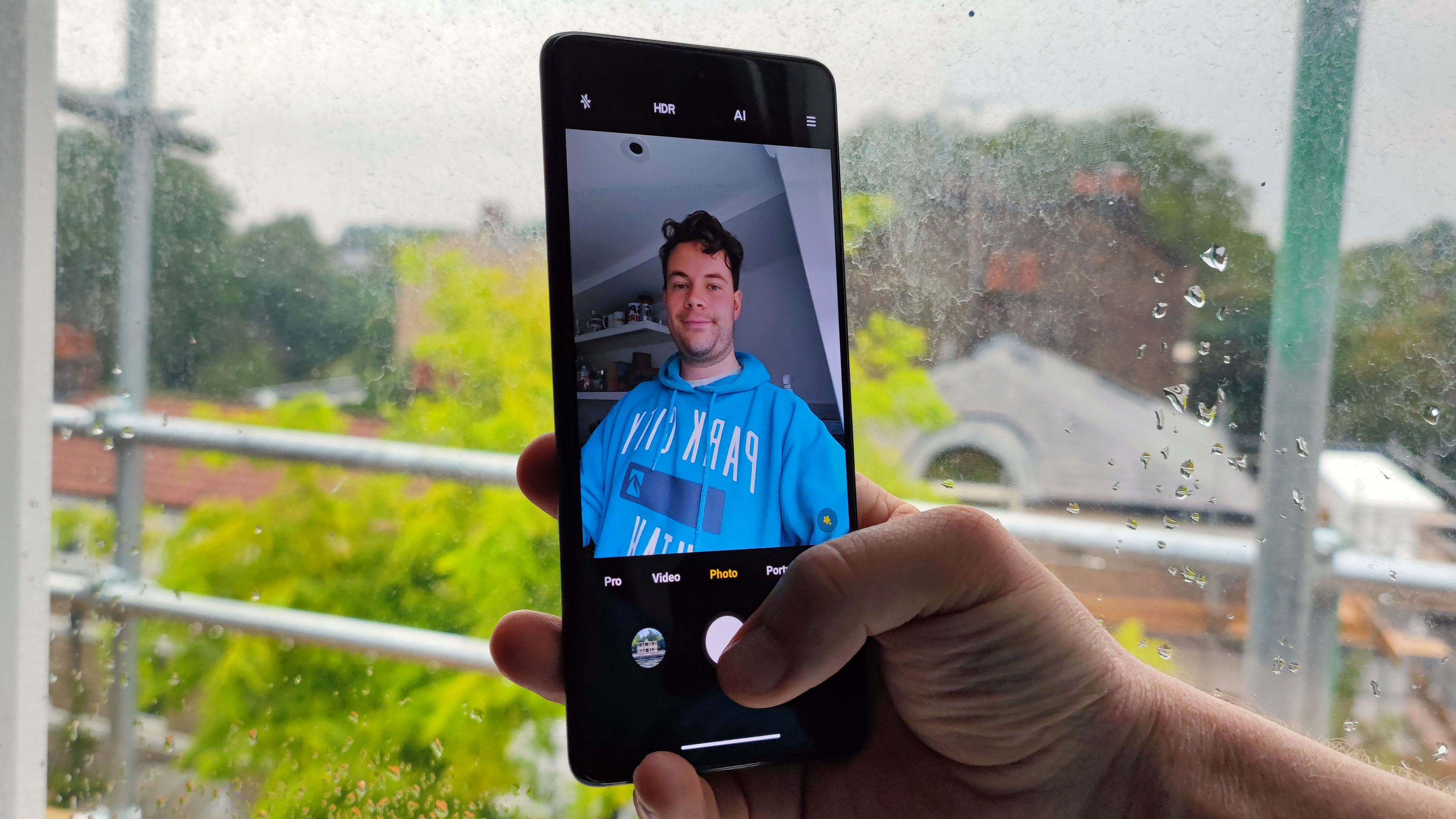
Portraits had eye-catching contrast, and it seems to us that shadows and highlights are tweaked on these snaps to make the subject stand out more. In these photos, the background blur or ‘bokeh’ effect generally did a good job of separating subjects from their backdrops,, although sometimes it could blur edges of the body too.
While selfie portraits look good, images taken using the main camera’s Portrait mode look great – the tweaks applied to images are subtle and hard to notice (unless you compare Portrait and Photo-mode snaps side-by-side), but they make the subject stand out from the background that little bit more.
Judging by Xiaomi’s marketing, videography is an important aspect of the 11T Pro’s camera capabilities. Video goes up to 8K resolution or 60fps (though not both at the same time) and a range of extra modes like letterboxing, macro video, object tracking and audio zoom give you handy extra tools for your movie-making.
Xiaomi has differentiated itself from the competition with a range of fun extra camera tools in its phones, for both stills and video, and that’s the case again here: there’s sky editing mode that lets you change the appearance of the sky background of a photo; Vlog mode, which automatically edits several-second-long video clips together; clone, which shows a mirror image for a photo or video; movie effects which basically add a color filter to videos, and more.
Unlike with most new Xiaomi phones, we couldn’t find any new modes introduced with the 11T Pro, but software updates frequently bring new tools to devices from the company.
Camera samples








Specs and performance
The Xiaomi 11T Pro runs on the Snapdragon 888 chipset – that’s not quite the top-end Android chipset available, with a Plus version released shortly before this phone was, but it’s still a super-powerful processor that should, in theory, make the phone snappy to use and great for gaming.
As we say, that’s in theory; however when we put the handset through the Geekbench 5 benchmark test, it returned a bizarrely spread-out range of multi-core scores, ranging from a low of 2787 to a high of 3058. Generally we see results within a range of less than 100, not closer to 300, as here.
For context, the 888-toting Mi 11 and Mi 11 Ultra both consistently hit over 3500, and the 11T Pro’s results are lower than those of any other Snapdragon 888 phone we’ve tested. In fact, many phones with older chipsets, like the Snapdragon 865-toting Samsung Galaxy S20 FE and the OnePlus 8 Pro, both beat it.
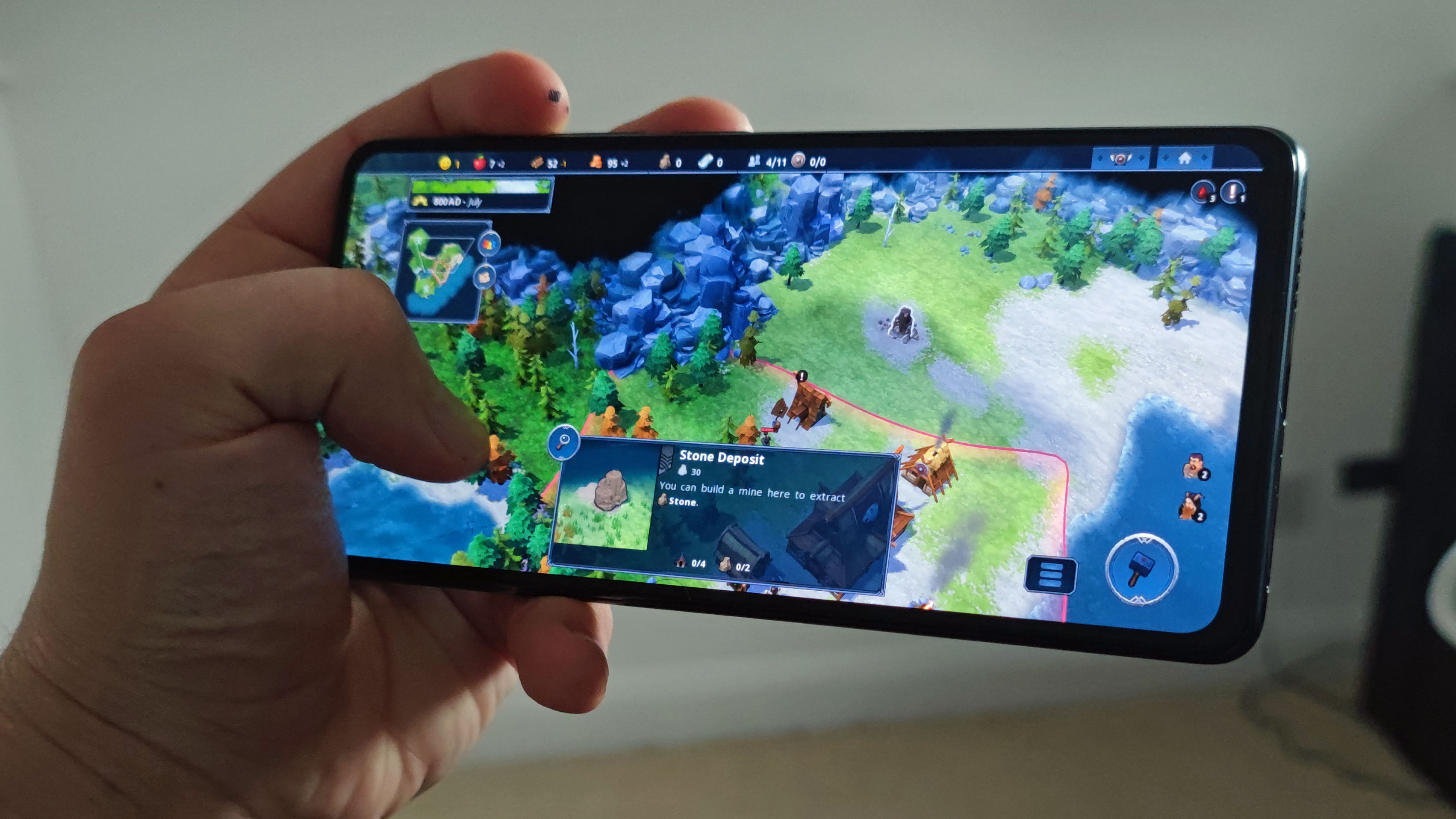
We’d speculate that the aforementioned heating problems are a big issue here. One of the biggest complaints users have made regarding the Snapdragon 888 is the overheating problem: when it’s running an intensive task, it can heat up rather easily compared to previous versions or rival chips, something that was noticeable when gaming on the Xiaomi 11T Pro.
When we ran the Geekbench tests straight after one another, the scores seemed to consistently dip, although even when cool the phone returned low scores. We’d speculate that the phone’s heat was reducing its performance, an issue we also faced with the Xiaomi Mi 11 Ultra, and it really feels like the company needs to improve the cooling systems in its phones.
That said, gaming felt fairly snappy on the Xiaomi 11T Pro – even a Geekbench score of 3000 bodes fairly well for gaming – and when we tested a diverse range of titles we found that the phone could handle maximum graphics settings with ease. It’s possible that really long gaming bouts could trigger the overheating issue, and potentially impact performance, but we didn’t encounter this in gaming sessions of up to an hour.
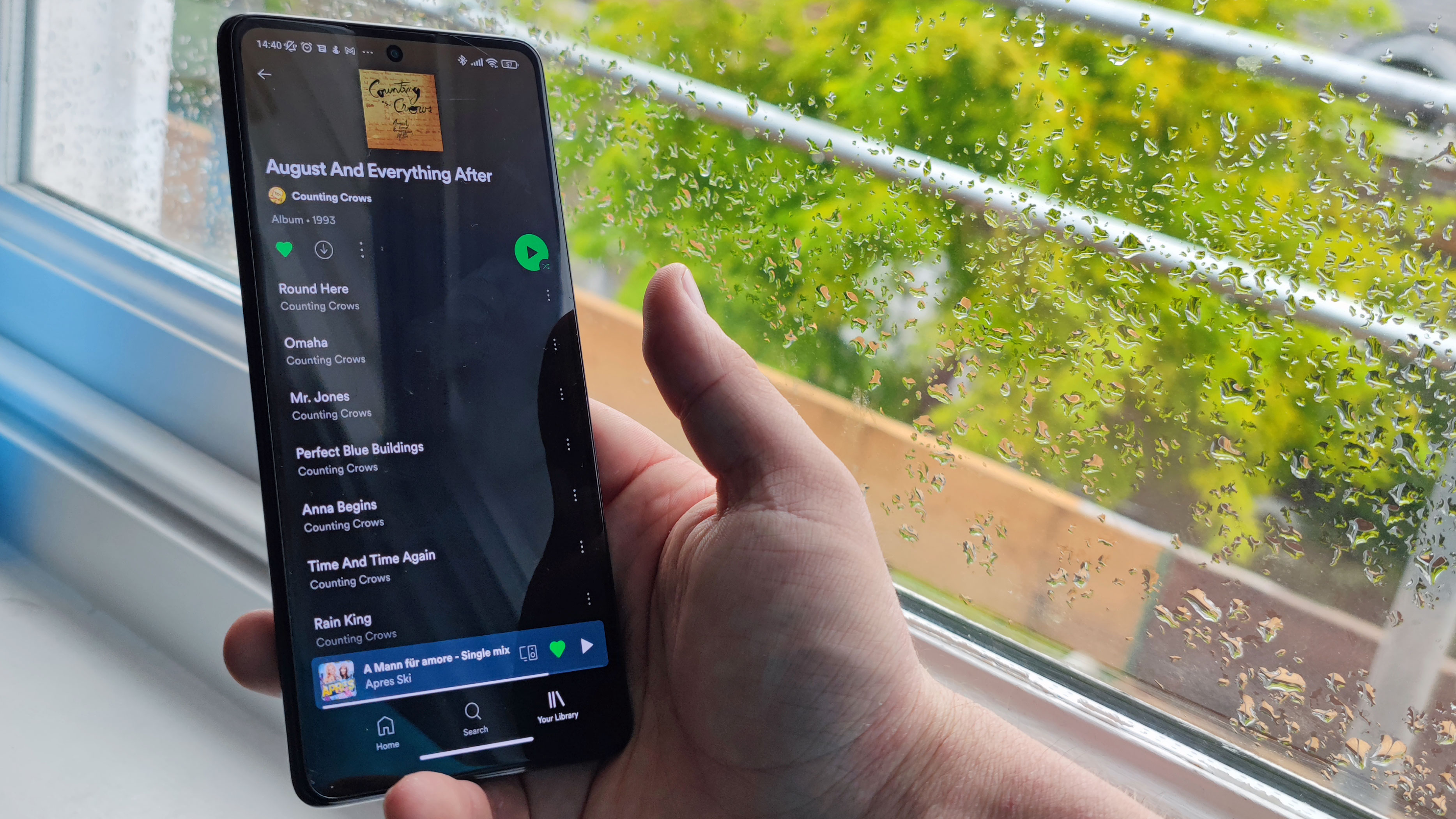
Software
Like all Xiaomi phones, the 11T Pro runs Android with the company’s own fork, called MIUI. The device comes running Android 11 out of the box, and it’ll likely get a few years of updates.
MIUI is divisive, and it’s easy to understand why. It comes with lots of pre-installed apps like eBay, LinkedIn and AliExpress; it can be fairly buggy (we encountered an issue in which it switched our wallpaper, and always-on display, from our selection back to the defaults); and its security feature, which scans new apps, will always bring up a huge overlay whenever a new app is installed.
If you can look past these issues – and you’ll have to squint to look past some of them – MIUI has quite a few positives which make up for the negatives.
The user interface has an iOS-style control center which you can toggle on. This means that instead of swiping down to see the options icons and your notification list, like on other Android phones, you can pull down from the top-left to see notifications or top-right to see options like Bluetooth, Wi-Fi and mobile data. Once you get used to something like this, it’s hard to go back to the standard one-list option on other devices.
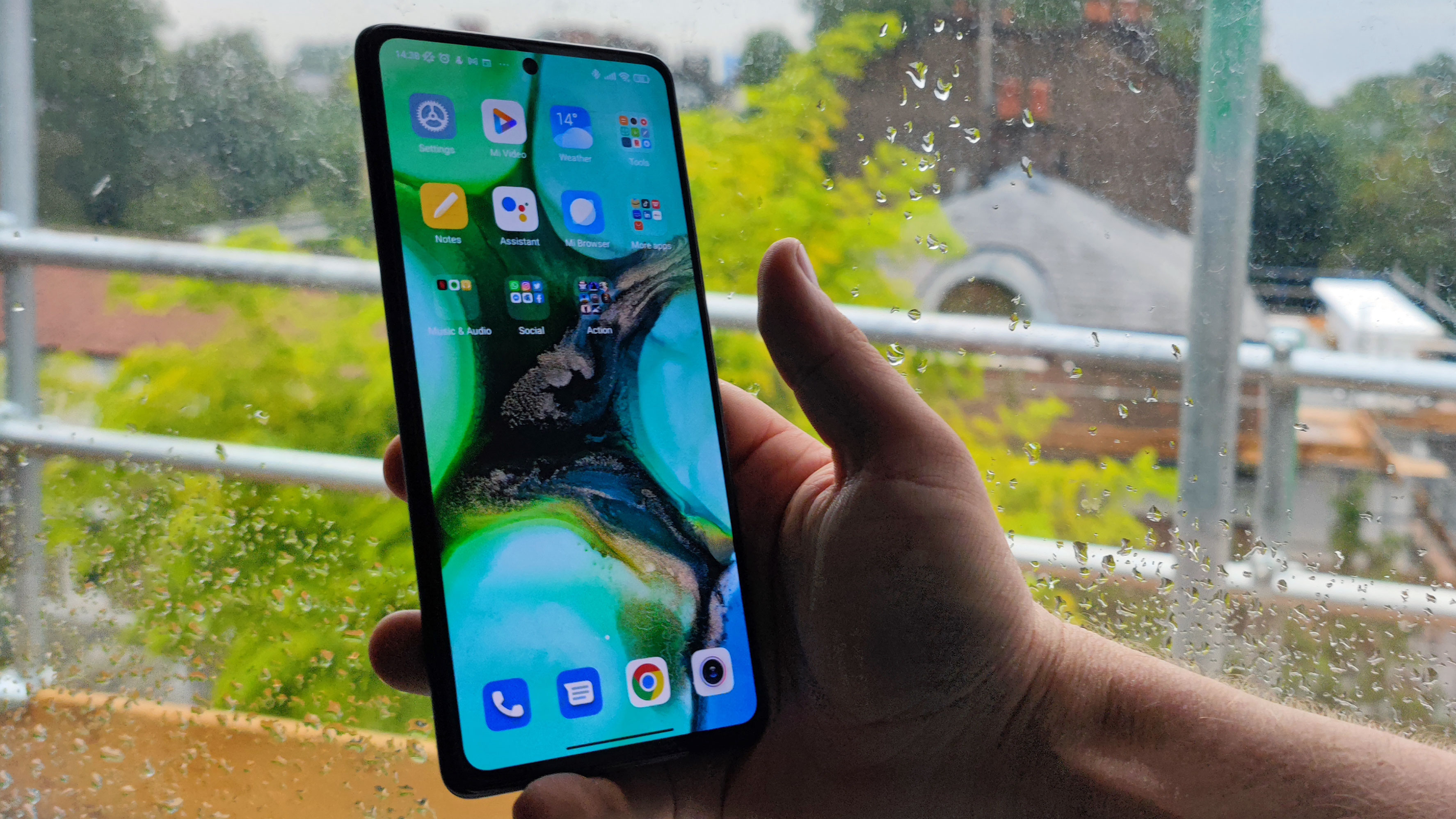
MIUI’s pre-packaged wallpapers all look great, especially the live ones, and it offers lots of options for customizing the always-on display. MIUI also provides loads of customization options to make the home screen feel truly yours, more so than some other Android forks.
It feels like MIUI does some things way better than other Android overlays, and other things way worse; using the Xiaomi 11T Pro makes this abundantly clear, and while we managed to overlook the annoyances, we can’t be certain that everyone will.
Battery life
While the Xiaomi Mi 10T Pro’s battery life was one of its best features, clearly the 11T Pro has taken after the Mi 11 instead of its year-older cousin, because the battery life isn’t amazing.
That’s a surprise given the 5,000mAh power pack, which is fairly big for a phone. It’s likely that a combination of the big display, high refresh rate, power-hungry chipset and 5G modem all eat away at the battery – you can turn off some of those if you like, though.
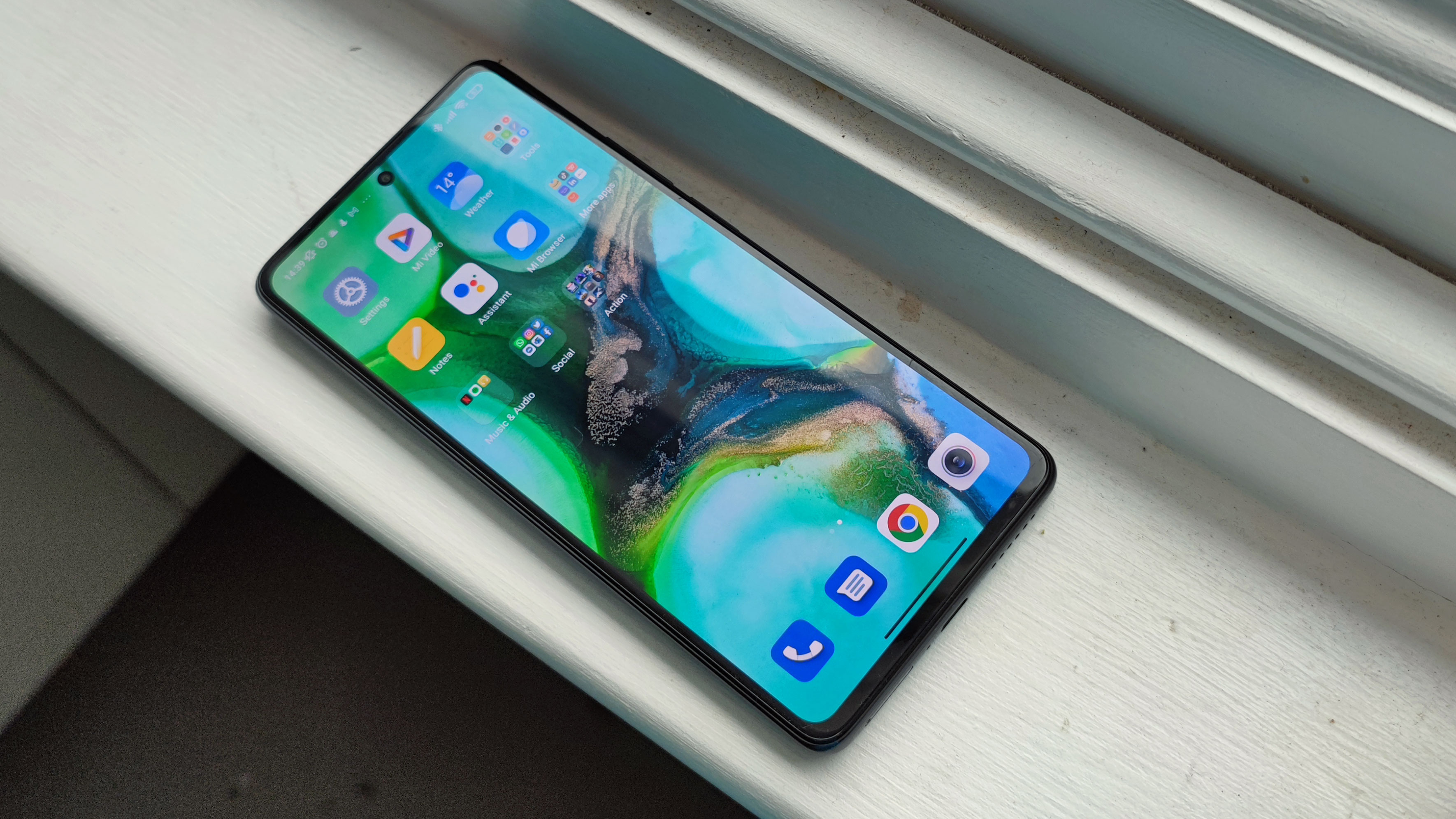
We found that, if we limited our use, we could get the phone to last a day between charges – by ‘limiting our use’ we mean questioning ‘do I really play that next level of a game’, ‘do I need to check Instagram on the loo’ and ‘maybe I don’t need to take a photo of dinner’… things some people would automatically answer ‘no’ to.
Less intensive phone users should get a comfortable day between charges, then, but if you use your device a lot, you might find the battery life limiting.
All the better, then, that the Xiaomi 11T Pro supports incredibly quick wired charging, at 120W (if you use the in-box charger). Not including a few devices which have only launched in select regions, this is the fastest powering we’ve seen on a smartphone.
Xiaomi states that it takes 17 minutes to power the phone up from empty to full using the in-box charger, and based on our testing, we’d concur. That’s impressively fast – you can get a whole morning of use in the time your pre-work coffee takes to brew (unless you use instant, of course) – and it goes a long way in offsetting the poor battery life.
There’s no wireless or reverse wireless charging here, so you’ll have to use cables to power up the phone, but that’s likely a result of the phone’s lower price.
Should I buy the Xiaomi 11T Pro?

Buy it if...
You don’t like having to charge your phone
If plugging in your phone to power it up is a chore, you’ll like the Xiaomi 11T Pro, as you won’t be spending ages waiting for it to juice up.
You like taking close-up pictures
As on the Xiaomi Mi 11, the 11T Pro’s standout camera feature is its telemacro lens, which performs wonderfully for snapping close-up or small subjects.
You like the Mi 11 but not its price
The Xiaomi 11T Pro brings lots of the Mi 11’s features to a device that costs less, so if that premium phone tempted you but the price was too high, this could be a good alternative.
Don't buy it if...
You like a clean software experience
While we’re not overly critical of MIUI, and didn’t find many bugs, other people’s experiences may be different. It’s certainly not as clean or smooth as iOS or stock Android, so if you want that level of simplicity you might want to avoid the Xiaomi.
You have small hands
If you have smaller hands, you might have trouble reaching the Xiaomi 11T Pro’s fingerprint scanner, or using the device with just one hand. There are smaller phones on the market that might be better suited to you, unless you’re okay with the stretch.
You’ll use it for long periods of time
Thanks to its overheating issues, the Xiaomi 11T Pro isn’t the best device if you’re a power user, particularly if you’ll be playing lots of games, editing videos or doing anything else power-intensive for longer periods, although buying a cooler could offset this.
- First reviewed September 2021
0 comments:
Post a Comment